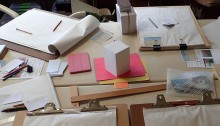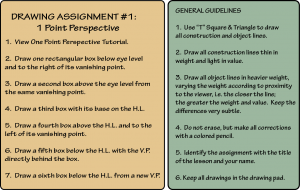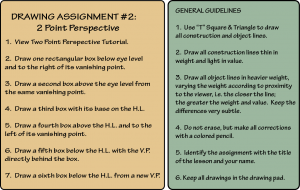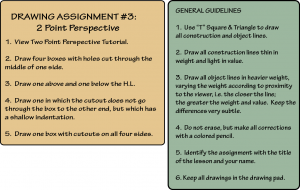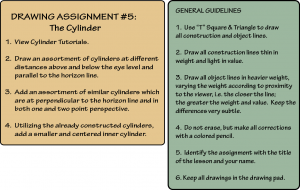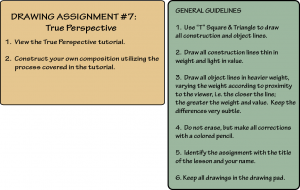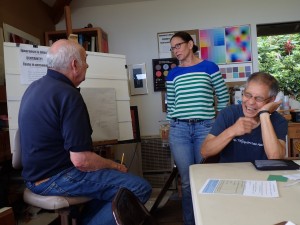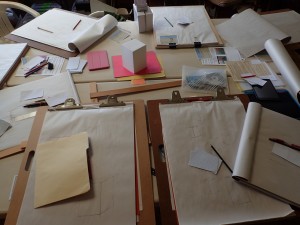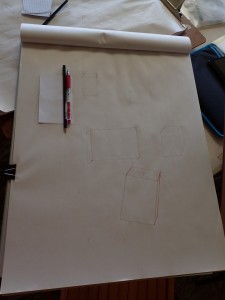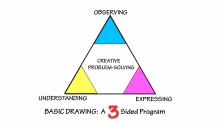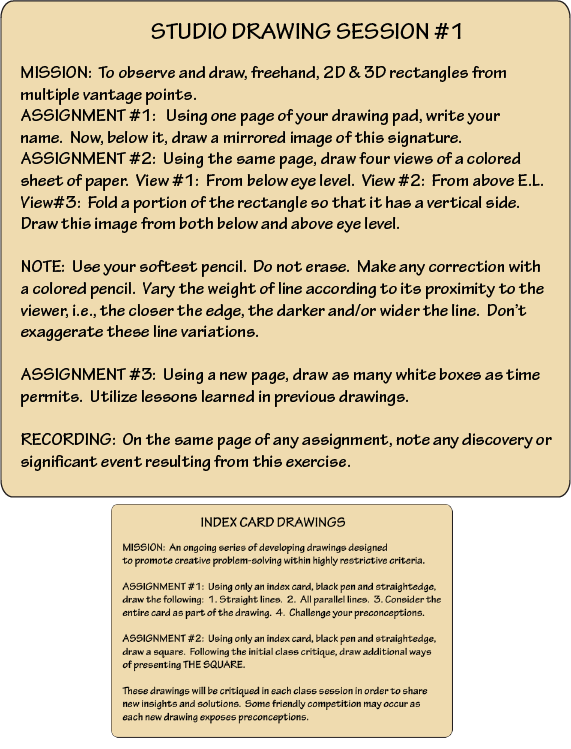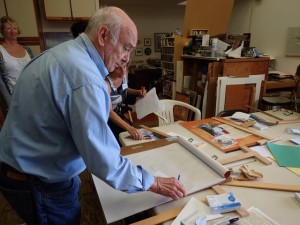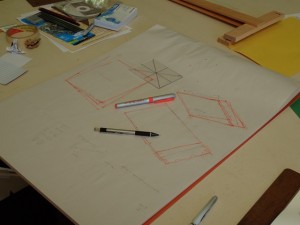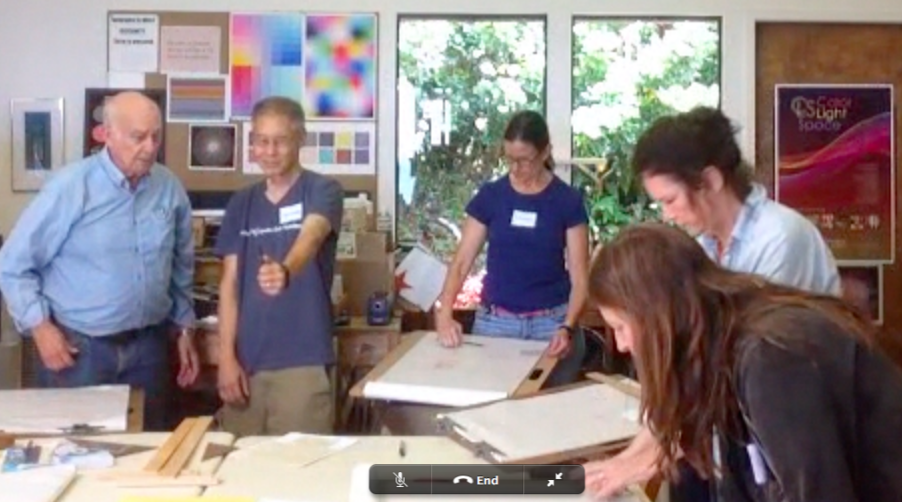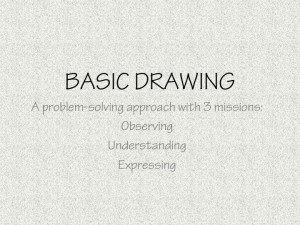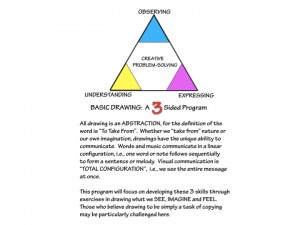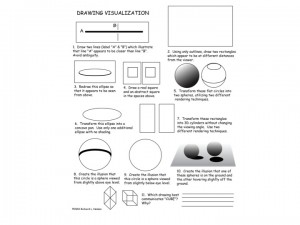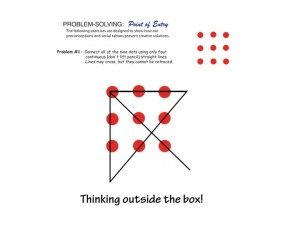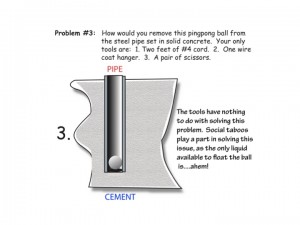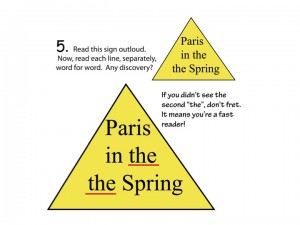The second session of the Drawing Foundation class for Fall 2015 was held on Thursday, September 24. The class shared some creative solutions for drawing a square on an index card, and reviewed the one-point perspective homework drawings. Students used sighting and measuring techniques introduced in the first class to draw rectangular boxes set up on tables, using two-point perspective.
Homework assignment
1. Continue with the index card assignments.
2. Proceed at your own pace through the perspective DVD. All seven assignments are shown below for reference.
Class recap
Index card assignment
It’s hard to recognize the preconceptions that can limit your creativity. Identifying the givens (explicitly naming the physical characteristics and criteria) can help. In this exercise, the givens are the black pen and white rectangular index card. The most obvious solutions will be to make a dark outline or figure on a light background, with sides parallel to the sides of the card. Tight constraints, such as being limited to only parallel lines, can bring out creativity.
Observation assignment: drawing rectangular boxes
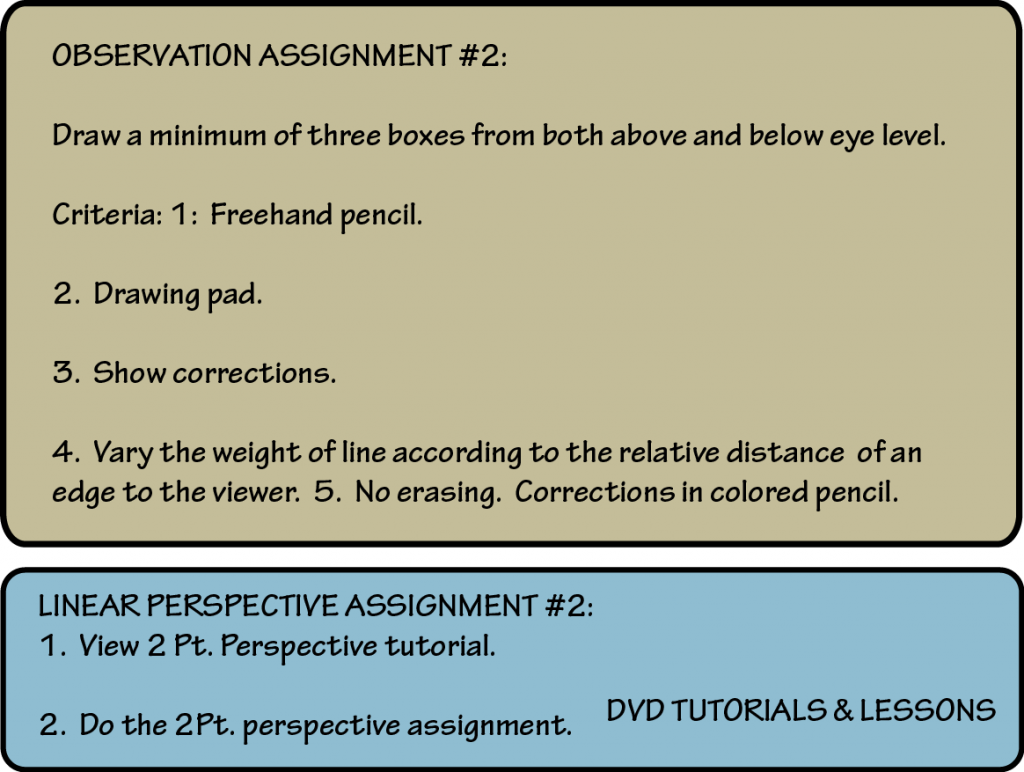
The class practiced drawing rectangular boxes from sitting and standing.
A tiny adjustment to line angle or length can make a big difference to the correctness of the perspective drawing.
Line character
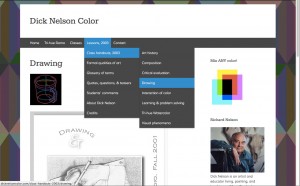 Dick briefly introduced the ideas of line weight, line character, and implied line. More information can be found in a drawing lesson handout on this website at https://dicknelsoncolor.com/class-handouts-2003/drawing/. The PDF found there is one of many that were included in the “Lessons” CD created for Dick’s retrospective exhibition at the Hui No`Eau in 2003. If you’ve taken a class from Dick since then, you probably own a copy.
Dick briefly introduced the ideas of line weight, line character, and implied line. More information can be found in a drawing lesson handout on this website at https://dicknelsoncolor.com/class-handouts-2003/drawing/. The PDF found there is one of many that were included in the “Lessons” CD created for Dick’s retrospective exhibition at the Hui No`Eau in 2003. If you’ve taken a class from Dick since then, you probably own a copy.
Videos and recordings
Dick demonstrates how to draw an arbitrary fold and a vertical fold.
Dick points out how eye level in two-point perspective affects angles on the page and what a viewer can see.
